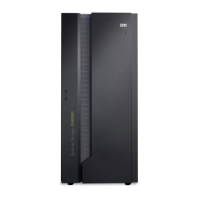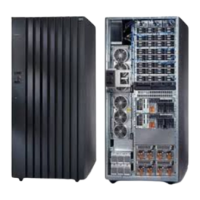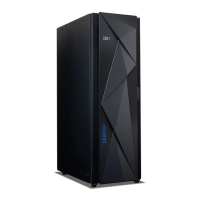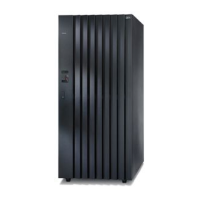Raised floor considerations
Installing the models on a raised floor provides the following benefits:
v Improves operational efficiency and allows greater flexibility in the arrangement
of equipment.
v Increases air circulation for better cooling.
v Protects the interconnecting cables and power receptacles.
v Prevents tripping hazards because cables can be routed underneath the raised
floor.
When you install a raised floor, consider the following factors:
v The raised floor must be constructed of fire-resistant or noncombustible material.
v Avoid the exposure of metal or highly conductive material at ground potential
to the walking surface when a metallic raised floor structure is used. Such
exposure is considered an electrical safety hazard.
v The raised floor height must be at least 30.5 cm (12 in.).For processors with
multiple channels, a minimum raised floor height of 45.7 cm (18 in.) is required.
Clearance must be adequate to accommodate interconnecting cables, Fibre
Channel cable raceways, power distribution, and any piping that is present
under the floor. Floors with greater raised floor heights allow for better
equipment cooling.
v When a raised floor tile is cut for cable entry or air supply, an additional floor
tile support (pedestal) might be required to restore the structural integrity of the
panel to the previous requirement.
v The use of a protective covering (such as plywood, tempered masonite, or
plyron) is required to prevent damage to floor tiles, carpeting, and panels while
equipment is being moved into or is relocated within the installation. When the
equipment is moved, the dynamic load on the casters is greater than when the
equipment is stationary.
v Concrete subfloors require treatment to prevent the release of dust.
v Use noncombustible protective molding to eliminate sharp edges on all floor
cutouts, to prevent damage to cables and hoses, and to prevent casters from
rolling into the floor cutout.
v Seal raised floor cable openings to prevent chilled air that is not used to directly
cool the equipment from escaping.
v Pedestals must be firmly attached to the structural (concrete) floor using an
adhesive.
Nonraised floor considerations
Raised flooring is best but an overhead cabling option is available for the DS8800
(Model 951), which is the top exit bracket for Fibre cable. This feature can be used
on nonraised floors. For special overhead cable management considerations and
installation guidelines, see the “Overhead cable management (top exit).”
Overhead cable management (top exit)
An overhead cabling feature (top exit) for Model 951 is now available.
Overhead cabling (top exit) is an optional feature for the DS8800, and includes a
top exit bracket for managing your cables. This feature is an alternative to the
standard, rear cable exit. Using overhead cabling provides many of the cooling and
safety benefits provided by raised flooring in a nonraised floor environment.
Unlike raised-floor cabling, the installation planning, cable length, and the machine
Chapter 6. Meeting DS8000 series delivery and installation requirements 143